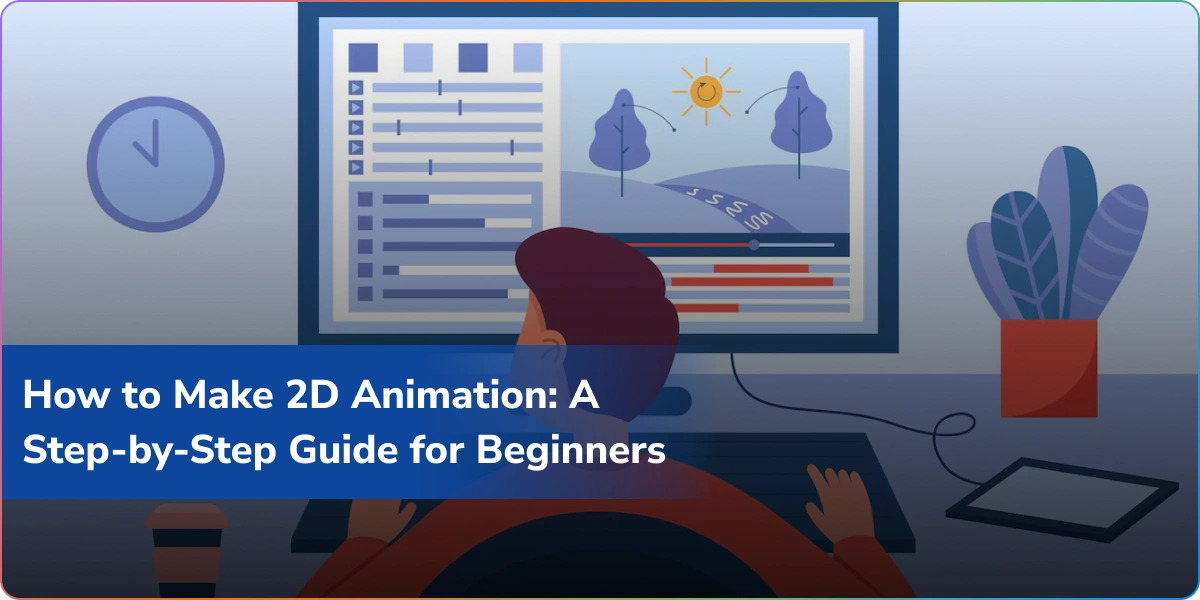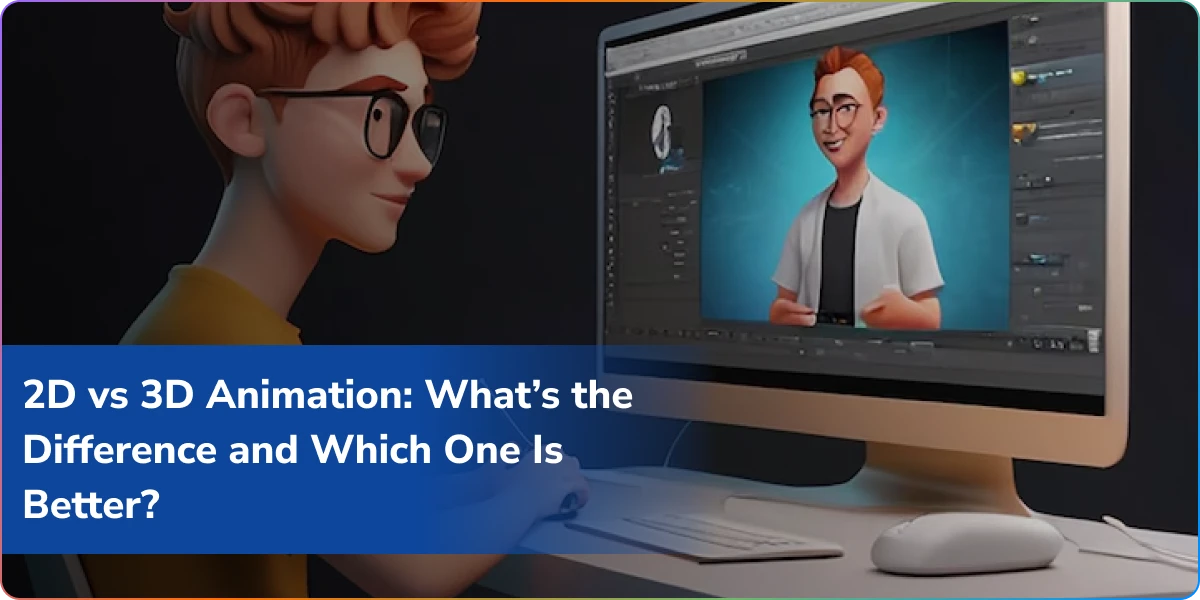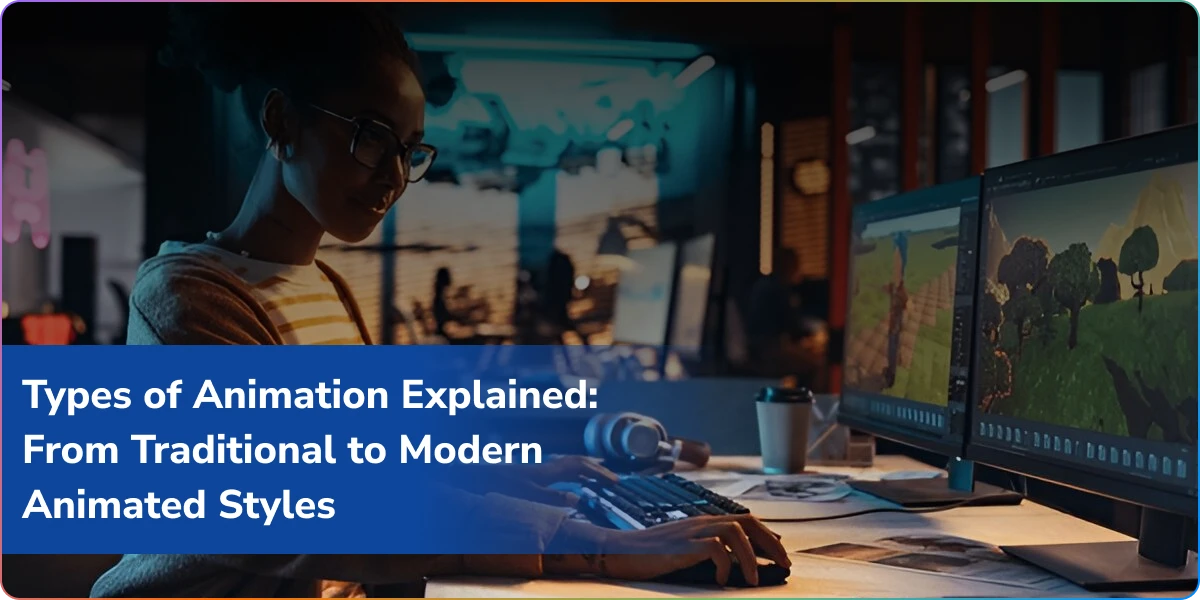Do you ever watch a cartoon, explainer film, or animated short and think, “I wish I could do that”? Don’t worry, you’re not the only one. Developing the skills to create 2D animation is one of the most thrilling artistic skills you can learn. It unlocks a universe in which your ideas, characters, and stories spring to life with movement, color, and personality.
In this comprehensive guide, you will learn exactly how to do 2D animation—from learning what it is, through coming up with your idea, creating characters, animating them, and ultimately publishing your own 2D animated work. Whether you’re looking for a hobby or exploring a new career opportunity, this guide is designed to assist animation for beginners in getting started on the right foot.
What is 2D Animation?
2D animation is the process of inducing movement within a two-dimensional plane. This traditional animation technique has been utilized in everything from vintage cartoons such as Looney Tunes to contemporary explainer videos and mobile game characters. In 2D animation, all of it—characters, backgrounds, objects—is drawn in a two-dimensional space, having height and width but no depth.
Even with the popularity of 3D and CGI, 2D animation is still very much in demand because of its flexibility, ease of use, and artistic freedom. It’s perfect for artists, teachers, advertisers, YouTubers, and game developers who wish to tell great visual stories.
Animation for Beginners: Why start with 2D Animation as a Beginner?
If you’re a newcomer to the world of animation, you may be thinking: why begin here?
- Easier to Learn: In contrast to 3D animation, learning how to create 2D animation is more accessible to beginners.
- Affordable Tools: There are numerous free or inexpensive pieces of software.
- Creative Freedom: You can convey your individual style more fluidly using hand-drawn components.
- Generally Useful: From YouTube clips to commercials, video games, and learning modules, 2D animation dominates them all.
- Solid Fundamentals: Mastering 2D animation techniques also teaches you fundamental animation concepts that are relevant to all styles.
So if you’ve got characters scribbled on a sketchpad and a story beating in your heart, beginner 2D animation is the ideal place to start.
How to make 2D Animation with Tools and Materials
You can’t animate without the proper tools. Here’s what you’ll need to begin:
- Drawing Tablet
A tablet lets you draw directly into animation software.
- Beginner-friendly: XP-Pen, Huion, Wacom Intuos
- Professional-grade: Wacom Cintiq, Huion Kamvas Pro
If you don’t want to buy a tablet, some apps like Procreate (on iPad) or even mouse-friendly programs allow you to begin small.
- Animation Software
There are several programs available to assist you in creating 2D animation. Select one depending on your purpose, budget, and familiarity.
- Pencil2D – Free, open-source, and best for hand-drawn animation
- Krita – Free drawing software with a powerful animation timeline
- OpenToonz – Employed by Studio Ghibli; free and professional-grade
- Toon Boom Harmony – Industry benchmark for TV animation
- Adobe Animate – Excellent for web animations and vector designs
Choose an instrument that suits your style—whether you prefer to draw frame by frame or work with digital puppets.
Step-by-Step Instructions: How to do 2D Animation
Now, let us proceed to the exciting part: how to create 2D animation from scratch.
Step 1: Come Up with a Story or Concept
Animation begins with an idea. Your story may be as simple as a ball that bounces or as complicated as a science fiction short film. What is important is that it serves a purpose.
Ask yourself:
- What do I want to say?
- Who are my characters?
- What is the beginning, middle, and end?
Put it into words, even a paragraph. Having an idea in mind makes the next step much easier.
Step 2: Write the Script
Your script describes the dialogue, action, and pacing of your animation. Even if you don’t have any characters talking, you’ll want to lay out what is occurring and when.
Example:
- Scene 1: A slumbering sun comes up over a hill.
- Scene 2: A cat stretches, yawns, and climbs a tree.
- Scene 3: The cat observes birds flying across the sky.
Short scripts are perfect for starting animation—do your best to keep it below 1 minute (around 100–150 words).
Step 3: Storyboarding
A storyboard is a visual map of your animation. You rough out the main scenes using stick people, basic shapes, or rough lines. It aids in structuring the order and seeing the pacing.
Use paper or digital programs such as Storyboarder (free) or even PowerPoint.
Per frame, include:
- Scene number
- Visual sketch
- Comments on motion or dialogue
- Camera angles (if applicable)
This is an important step for anyone looking to learn how to do 2D animation effectively.
Step 4: Design Your Characters and Backgrounds
Design is when your project finally begins to take shape.
- Characters: Begin with simple shapes. Use large, clear features—particularly eyes, expressions, and limbs. If you’re animating movement, divide the body into sections (head, arms, torso, legs) to facilitate rigging or motion.
- Backgrounds: Simple or detailed, whatever your style. Begin with static backgrounds that don’t move if you’re new to this.
Don’t panic—beginner animation is all about trial and error and getting better with time.
Step 5: Select Your Animation Method
There are a number of ways to create 2D animation, depending on your software and aesthetic.
- Frame-by-Frame Animation
Draw each frame separately. It’s labor-intensive but provides smooth and realistic movement. - Cut-Out Animation
Similar to a paper marionette show, you construct characters in pieces and move them around in sections. - Rigged Animation
Make a digital skeleton (or “rig”) and apply it to your character, allowing you to animate it as a puppet with bones.
For starting out, begin with simple frame-by-frame or cut-out animation. These allow you to learn about timing and movement.
Step 6: Bring Your Scenes to Life
This is the core of how to make 2D animation.
Begin with an empty timeline and insert your keyframes (most important actions in a scene).
For instance:
- Frame 1: Character remains static
- Frame 5: Character lifts hand
- Frame 10: Character waves
Then add the “in-betweens”—the fill-in frames that establish smooth movement.
Animation tips for beginners:
- Apply “onion skinning” to view previous and next frames.
- Draw on “twos” (1 drawing per 2 frames) for a smoother appearance.
- Don’t try to be perfect—go for clarity and consistency.
Step 7: Add Audio and Sound Effects
Nice sound brings your 2D animated video to life.
Record your own voice, or use text-to-speech software, or have a professional voice actor. Then include background music and sound effects—footsteps, wind, laughter, etc.
Free resources:
- Freesound.org
- Bensound.com
- YouTube Audio Library
Sync audio in your animation software or use applications like Audacity or Adobe Audition.
Step 8: Export and Share
After you’ve animated your scenes, synced the sound, and polished your project, the next step is to export!
Common export formats:
- MP4 – Great for sharing online
- MOV – Higher quality for archiving or editing
- GIF – Short loops for social media or memes
Once exported, upload it to platforms like:
- YouTube
- Vimeo
- Behance
You can even submit your work to short film festivals or animation communities for feedback!
2D Animation Techniques to Experiment Further
As you develop, experiment with more advanced 2D animation techniques such as:
- Parallax scrolling to achieve depth
- Camera movement for dynamism in shots
- Lip-syncing to get characters to speak
- Looping animations for GIFs or video game sprites
There are many possibilities once you have learned the basics of how to create 2D animation.
Common Beginner Mistakes (And How to Steer Clear)
- Beginning Too Large: Make that first project brief and uncomplicated.
- Omitting Storyboards: This results in chaotic scenes.
- Complicating Designs Too Much: Elementary forms animate better.
- Forgetting Timing: Observe real-world motion to develop a sense of pace and flow.
- Quitting Too Early: It gets slow at the beginning, but each frame you draw adds to your ability.
Conclusion
We hope our step-by-step guide to make 2D animation for beginners avails you with necessary guidance and is fruitful in creating amazing projects. Let us know which is your favorite tool for creating 2D animation in the comments section below.
FAQ’s
Q1: Which software is needed to start 2D animation?
As a beginner, you can start with tools like Adobe Animate, Toon Boom Harmony, or open-source options like Pencil2D and Synfig Studio.
Q2: Does one need drawing skills to make 2D animation?
No, drawing skills help, but they aren’t mandatory. You can use premade assets, templates, or vector tools.Some also use rigs and puppets instead of frame-by-frame drawing.
Q3: What is the time duration to create a 2D animation?
It depends on the complexity and factors like style, frame rate, and tools used. A simple animation might take a few hours to a few days.
Q4: What’s the difference between frame-by-frame and rigged 2D animation?
Frame-by-frame involves drawing every frame manually, while rigged animation uses skeleton-based structures to move characters efficiently. Rigged animation saves time for recurring movements.
Q5: How can Logixbuilt Solutions help in creating 2D animations?
We offer professional 2D animation services, from script and storyboard development to final rendering. Our team uses industry-grade tools to bring your vision to life—efficiently and affordably.


